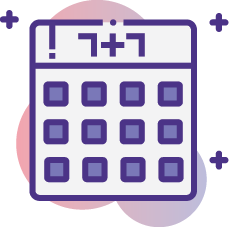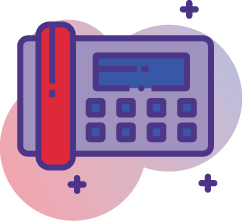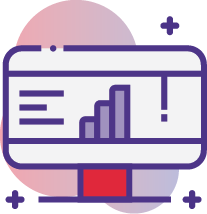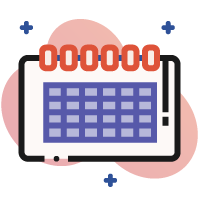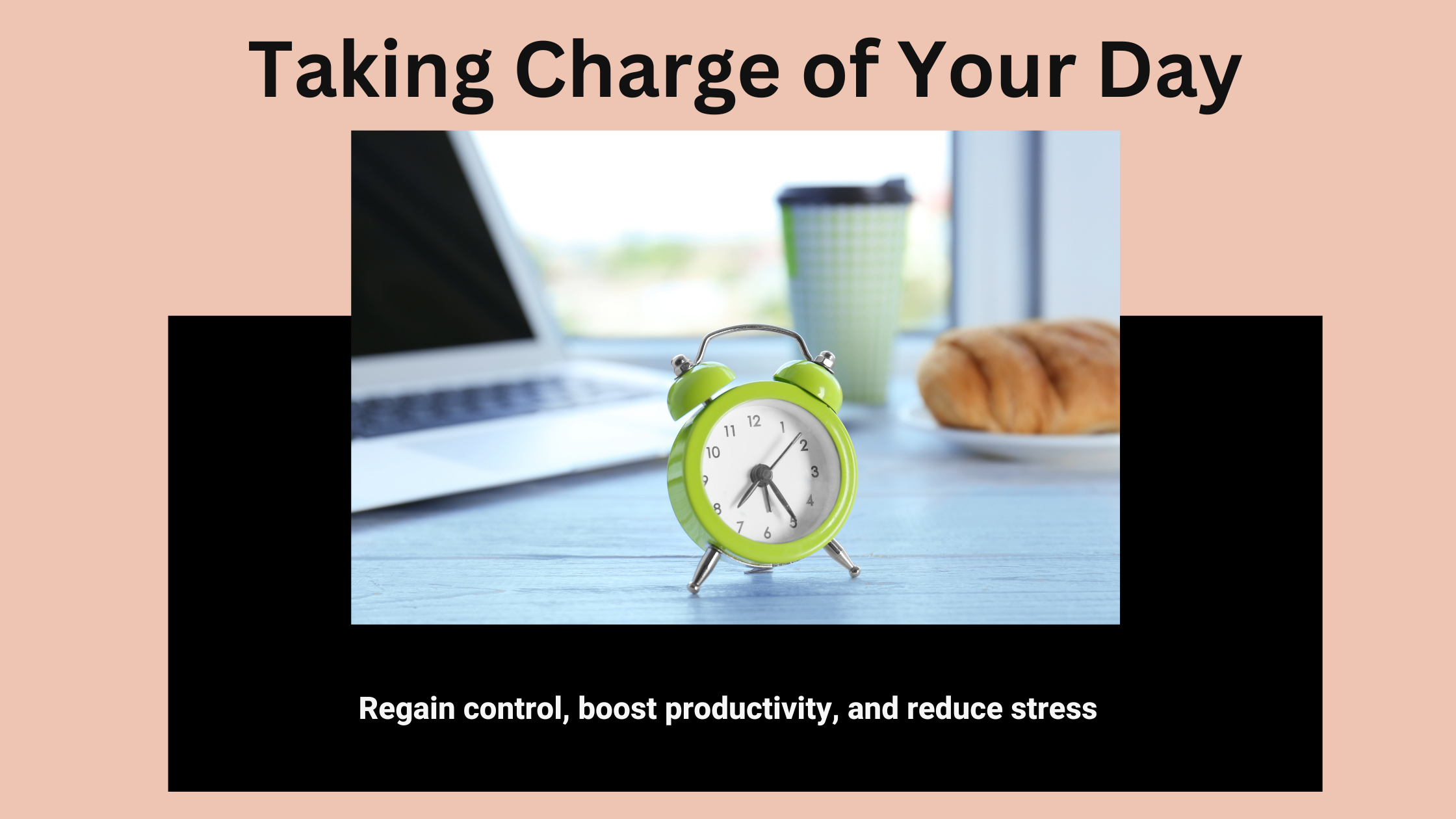My to-do list keeps getting longer, my project list has doubled in size, I feel like I’ve got more work than time, and I’m not alone.
It feels like being overwhelmed is normal, with multiple studies showing that the numbers continue to worsen each year. Unfortunately, feeling overwhelmed results in burnout, decreased productivity, and the feeling that you are always playing catch up but won’t ever get there.
Taking charge of your day can happen without a massive overhaul of your life, though. Following these five tips, you can regain control, boost your productivity, and reduce your stress.
- Prioritize: Focus on What Matters Most
Prioritization is the cornerstone of effective time management. When you prioritize, you’re making conscious decisions about what tasks deserve your attention first. A study by reclaim.ai from January 2024 says that 98.2% of people have trouble prioritizing tasks.
When we think about priorities, we often think of our to-do list. Instead, identify your most critical tasks. Ask yourself the consequence of not doing that task or doing it after the deadline. While we likely have to do all things, and there is a consequence for all things undone, they do have a priority list. What I do for one manager might have a higher priority than for a colleague (the consequence is higher to not doing things for a manager).
Then, tie in your schedule and energy times for scheduling these tasks. For instance, I have the most energy and focus in the morning, so all of my critical tasks are done first thing in the morning. The easier tasks are done at the end of the day. I want to do all of my tasks, but when I do them is the prioritizing you need to take charge of your day.
For instance, if you’re responsible for generating a weekly report that impacts your team’s strategy, make that your first task of the day. This ensures that the most critical work is completed before unexpected events or lower-priority tasks eat up your time.
- Write Lists: Stay Organized and On Track
Writing lists is a tried-and-true method for staying organized and ensuring nothing falls through the cracks. According to a study by TimeWatch, only 38 percent of people use a to-do list, 23 percent use a calendar, and 13 percent use email, but a whopping 14 percent do whatever they think is most important at the moment (which isn’t reliable but does ensure you will feel busy all the time). Lists are a visual reminder of what needs to be done to ensure you don’t forget, and for some, they provide a sense of accomplishment as you check off completed items.
Start your day (or end your day if that works better for you) by creating a to-do list. I like to write mine down and keep it beside my keyboard, but that likely reflects my age and learning style. You can use digital tools like Microsoft To Do, Trello, or Asana, which can help you manage lists across multiple projects, set deadlines, and even share tasks with colleagues.
I have daily, weekly, and monthly lists that I focus on. I have a list that is a catch-all for all the projects I need to get done. While I don’t need to check them off, I need to write them down. Much like writing a grocery shopping list, it helps me remember all the things I need to do.
- Manage Distractions: Protect Your Focus
Distractions are productivity killers. Research by the University of California, Irvine, found that it takes an average of 23 minutes and 15 seconds to regain focus after a distraction. In a typical office setting, where distractions are rampant—emails, chat notifications, and colleagues stopping by—it’s no wonder so many workers struggle to stay focused. Odds are very high that you’ll be interrupted before you get to the 23-minute mark.
I work better in silence. I don’t want music, chatter, or the dinging of an email to distract me. I try to hide when I work in open spaces, as even someone walking by will grab my attention (and I don’t even know who they are!).
Pay attention today to see what is grabbing your attention away.
Is it your phone, with its constant barrage of notifications? Or is it the open-plan office, where conversations are hard to tune out? Maybe the notification bar on your Teams Chat or inbox. Once you’ve pinpointed the distractions, take steps to minimize them.
One effective strategy is to schedule “focus time” during your workday. During these periods, mute notifications, close your office door (if possible) and let colleagues know you’re unavailable or are on focus time. If you can, set your availability to “not available” and honor that. If you respond when your indicator says you aren’t available, you are teaching others that your status doesn’t matter.
If you can work from home occasionally, ensure that your work-from-home day is set up to remove all your distractions.
Take the next week and notice how often a distraction interrupts your thinking. You’ll find that many times, you are the worst enemy as we flit from task to task instead of getting focused on one. Pay attention to what distracted you, and then plan to avoid those distractions if possible.
- Avoid Procrastination: Get Started and Stay Moving
Procrastination is the enemy of productivity. A study by Piers Steel, a leading researcher on procrastination, found that 95% of people admit to procrastinating, with 20% identifying as chronic procrastinators. Delaying tasks increases stress and reduces the quality of your work as you rush to meet deadlines.
To combat procrastination, the key is just to get started. Often, the most challenging part of any task is the beginning. Once you’ve begun, momentum takes over, making it easier to continue. Start a list, break tasks into smaller steps, and start scheduling time to complete small pieces.
If you’re still struggling, try my “three-minute rule.” If a task takes three minutes or less, do it right away and get it gone. If you are tasked with something over three minutes, schedule it, write it on the appropriate to-do list, and prioritize, as we discussed in the first two tips. This simple rule can help you knock out small tasks quickly, reducing the overall burden on your to-do list.
- Keep Routines: Build Consistency into Your Day
Routines provide structure to your day, making it easier to manage your time and energy. According to Charles Duhigg, author of The Power of Habit, routines are powerful because they remove the need for decision-making, allowing you to operate on autopilot for mundane tasks. This frees up mental energy for more important work.
Start by establishing a morning routine that sets a positive tone for the day. This might include reviewing your to-do list, prioritizing tasks, and a clean first pass on your email. A consistent morning routine helps you transition from personal time to work mode, ensuring you start the day focused and prepared.
It’s also important to establish routines around breaks and end-of-day activities. Regular breaks are essential for maintaining productivity and preventing burnout. Plan to have lunch with a colleague or meet someone for a scheduled walk at break. It gives you the physical and mental break needed to help you return to your desk with focus.
End your day with a routine that includes reviewing what you’ve accomplished, updating your to-do list, and planning for the next day. This helps you close out the day on a positive note and ensures you’re ready to hit the ground running the following morning.
Taking control of your day requires a combination of prioritization, organization, focus, and consistency. By implementing these five strategies—prioritizing tasks, writing lists, managing distractions, avoiding procrastination, and keeping routines—you can reclaim time, reduce stress, and improve productivity. Start small by incorporating one or two of these practices into your daily routine, and watch as your days become more manageable and fulfilling.
This article was written by Rhonda Scharf and not by artificial intelligence.



